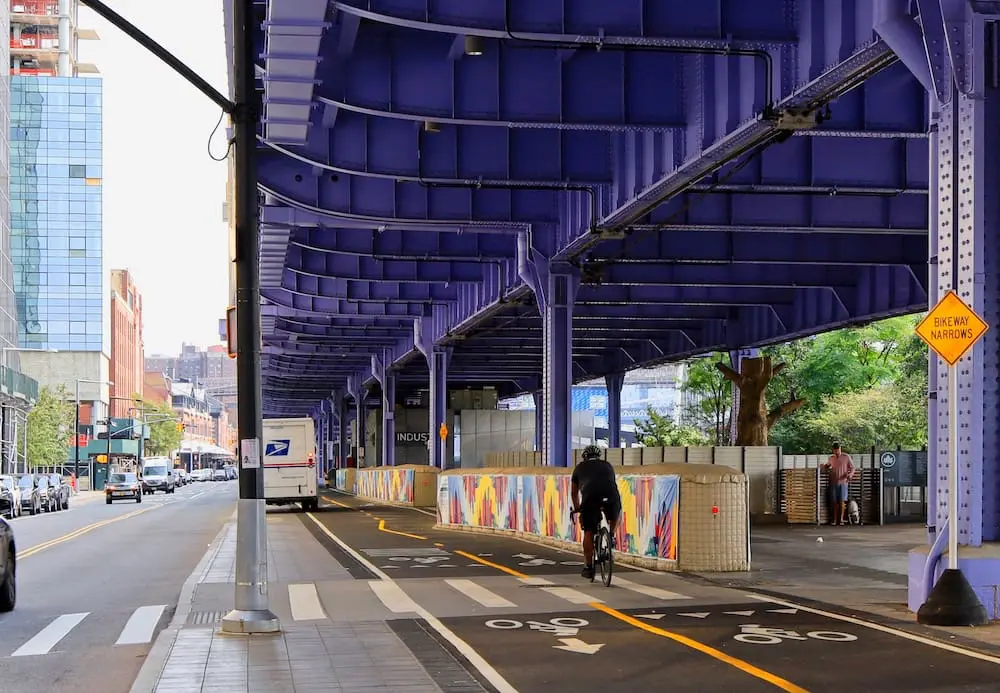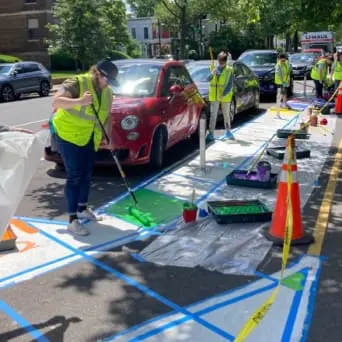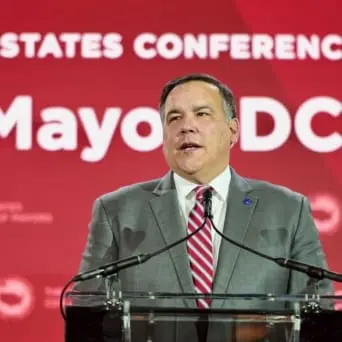By London Weier
Every year, more than 7,000 pedestrians are killed on U.S. roadways, according to National Highway Traffic Safety Administration data. At the same time, nearly half of American adults don’t get enough physical activity — often because they lack safe, accessible places to walk, bike, or roll. But the good news is that a proven solution exists — Complete Streets, a policy approach that reimagines how we design and use our roads to ensure safety, access, and mobility for all.
Complete Streets is a street design framework that enables all road users to move safely throughout their communities. This includes pedestrians, bicyclists, motorists, and transit riders of all ages and abilities.
Momentum for Complete Streets has been building in cities across the country. In CityHealth’s 2024 Policy Assessment, Complete Streets saw the highest percentage year-over-year growth across the entire policy package. Yet, despite rising interest, many cities still struggle to meet the criteria for a CityHealth medal. Fewer than half of CityHealth’s assessed cities — 30 out of 75 — have earned a Complete Streets medal, and of those, only seven achieved a gold. In this article, we explore the most common roadblocks — and how local leaders can overcome them. To illustrate, we highlight one exemplary city — El Paso, Texas — to show how it addressed each of these challenges and achieved a gold medal.
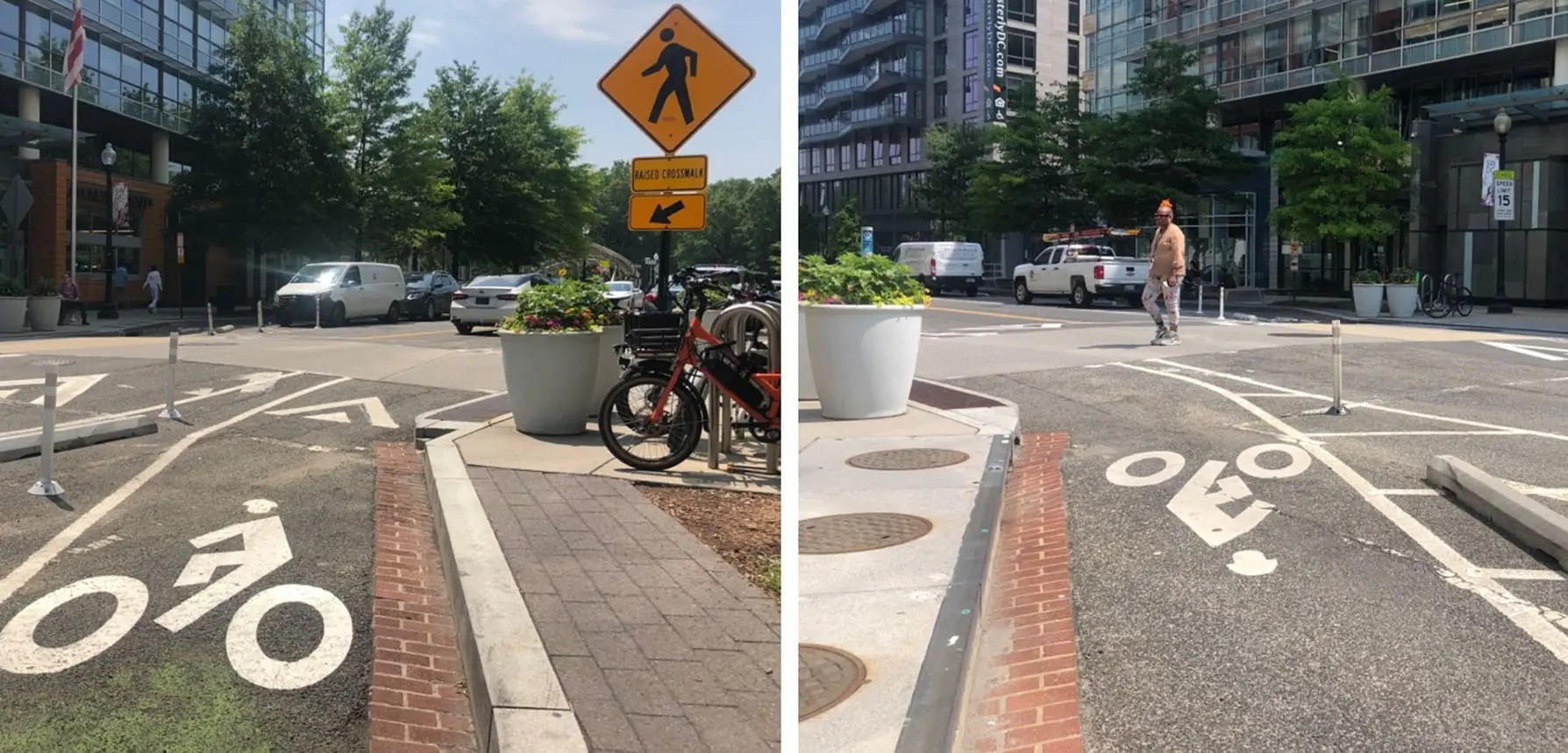
Complete Streets elements, such as raised crosswalks and protected bicycle lanes, can help protect and promote diverse forms of mobility. Credit: Dustin Robertson/SGA
Challenge 1: Creating the Foundation—Adopting a Complete Streets Policy
A Complete Streets policy is a plan of action officially adopted by the city government. For CityHealth’s annual policy assessment, the first criterion is whether a city has formally adopted a Complete Streets policy. This may seem straightforward, but other documents — such as master plans or guidelines — are sometimes mistaken for formal, binding policies.
It is important to have a single, unified document to be certain that Complete Streets is an integral component of a city’s landscape. A great policy ensures that future programs, guidelines, plans, and projects all utilize the same foundation of guiding principles.
Learn how St. Louis and San Antonio improved their Complete Streets policies in this June 2025 webinar.
The good news for cities looking to pass a new policy, or improve a previously adopted one, is they do not have to reinvent the wheel. There is an opportunity to learn from other cities. El Paso unanimously passed a robust Complete Streets policy in 2022, which is a testament to the need for collaboration along the policy journey. The city’s road to Complete Streets began in 2020 with the El Paso Complete Streets Coalition. The coalition, led by the American Heart Association and funded by the Centers for Disease Control and Prevention’s Racial and Ethnic Approaches to Community Health (REACH) grant program, prioritized the involvement of diverse road users and looked to other examples of successful Complete Streets policies, like the one passed by Tucson in 2019.
From the outset, El Paso set a goal for its policy to earn a CityHealth gold medal. Throughout the process, CityHealth, Smart Growth America and coalition stakeholders were invited by the city to provide inputs and insights at key moments to ensure a strong policy was adopted.
The coalition aimed to develop a clear, actionable policy to guide decision-making. While drawing inspiration from a successful existing policy helped shape the framework, a deliberate and strategic approach to adoption ensured the initiative’s strength and long-term impact. The El Paso Complete Streets Coalition advocated for the city to pass the policy as an ordinance, effectively giving the document the same force as zoning regulations.
It can feel daunting to embark on the creation of a new Complete Streets policy, but utilizing successful examples as well as CityHealth’s Action Guide, the Complete Streets FAQ sheet, and other resources on CityHealth’s website can provide direction, inspiration, and even opportunities for support and collaboration.
Challenge 2: Strong Compliance Language Strengthens Impact
Cities can strengthen their Complete Streets policies by using clear, directive language—such as “shall” or “must” instead of “may” or “consider” — to ensure the policy guides real action. These simple word changes transform a policy by embedding compliance throughout the document.
Here is sample text from three different Complete Streets policies that use strong, binding language:
Baltimore:The Department must construct and operate a comprehensive Complete Streets Transportation System that enables access, mobility, economic development, attractive public spaces, health, and well-being for all people. |
Sacramento:…the City of Sacramento shall direct the design, |
St. Louis:…it shall be the official policy of the City of St. Louis to routinely incorporate Complete Streets principles into all transportation projects that are within the City of St. Louis transportation network, including those projects or services managed by other public agencies or districts. Complete Streets principles shall also be considered in all planning and land use decisions. |
Beyond word changes, other structural assurances can be embedded in policy development to bake compliance into the adoption and implementation of Complete Streets policies.
El Paso started with strong policy language: In the first section, it stated that “The City shall consistently support, plan, design, construct, and operate an interconnected street network that safely accommodates all anticipated users and transportation modes.” The city took compliance even further by adopting the policy as an ordinance, developing project checklists, and establishing two committees to monitor implementation.
Challenge 3: Policies Should Prioritize Vulnerable Users
Complete Streets policies are most effective when they intentionally prioritize the needs of vulnerable users—such as people of color, older adults, people with disabilities, and those in low-income neighborhoods — who are disproportionately impacted by unsafe road conditions. For example, on a national level, people of color, older adults, people walking in low-income neighborhoods, and people with disabilities are disproportionately struck and killed on our country’s roadways.
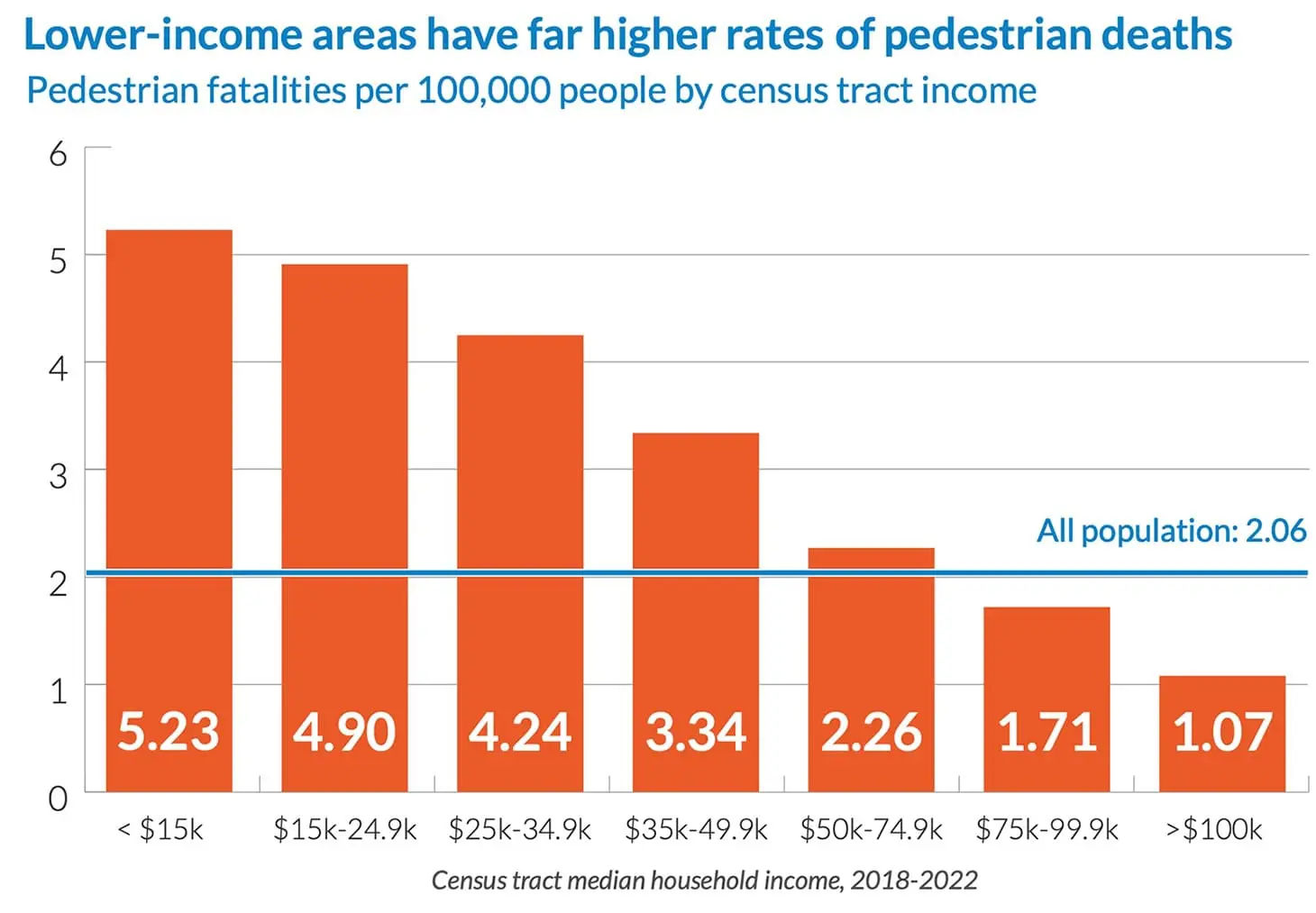
Source: National Highway Traffic Safety Administration (2024). Fatality Analysis Reporting System.
Transportation infrastructure should be designed to support all users, providing convenient, reliable, accessible, and safe access regardless of mode of transportation. Policies often miss this mark when the community’s most vulnerable populations are not prioritized or only considered at some project stages.
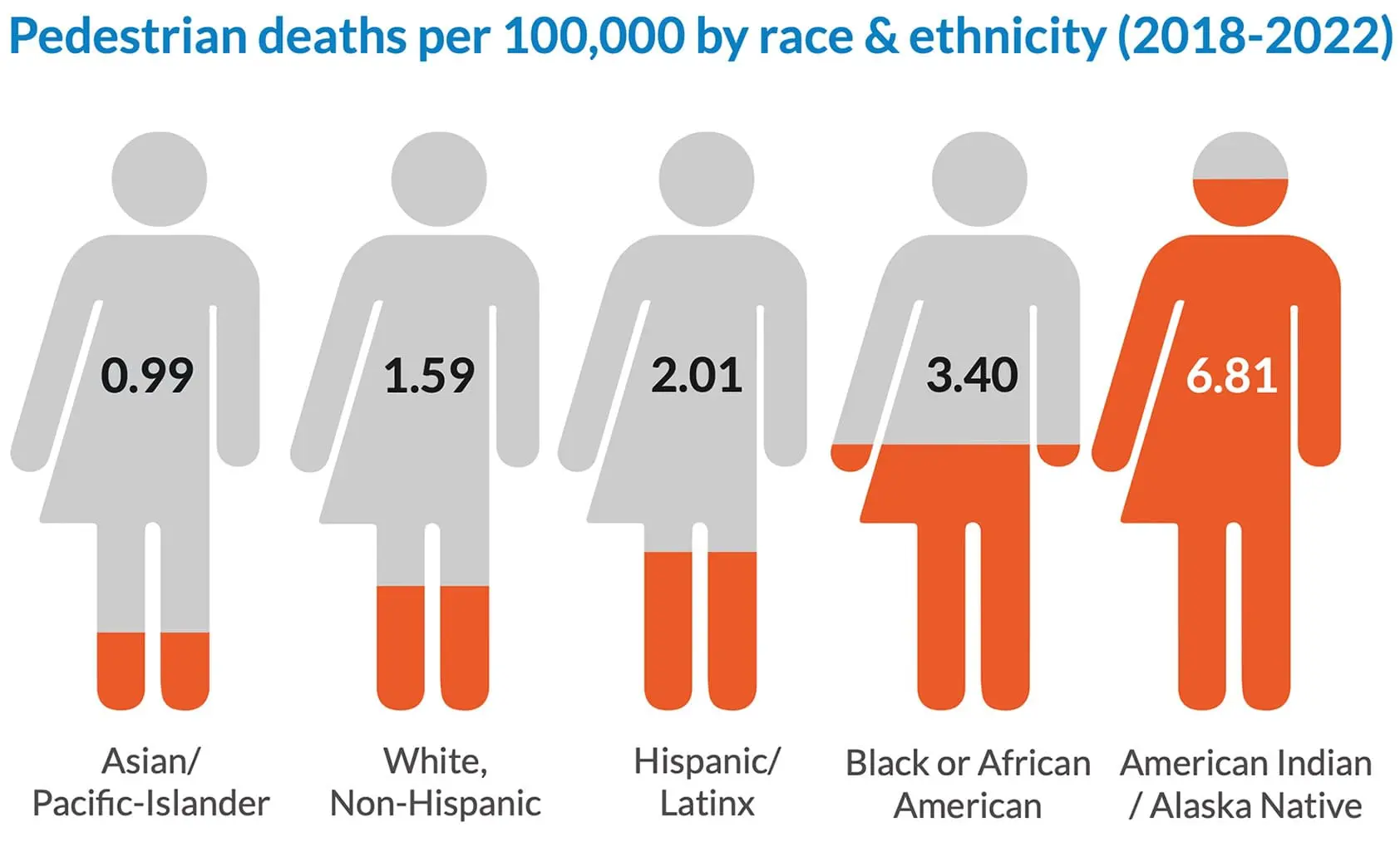
Source: National Highway Traffic Safety Administration (2024). Fatality Analysis Reporting System.
Collaboration was key for El Paso to understand its community’s most vulnerable populations. The El Paso Complete Streets Coalition collaborated with projects launched by the city’s Vision Zero Action Plan to collect crash data that reflected the local impacts of dangerous roadways.
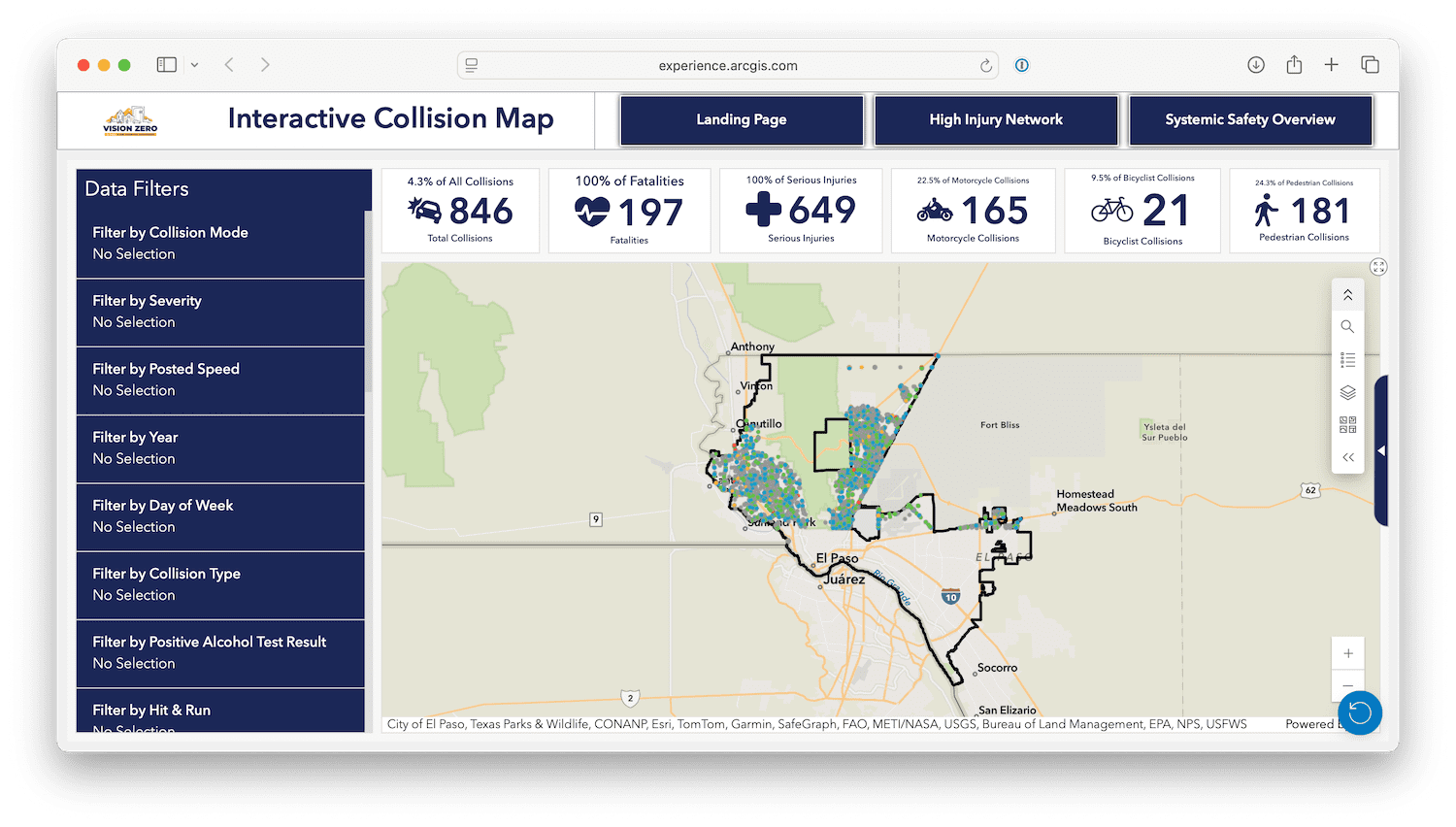
El Paso Vision Zero dashboard. Source: El Paso Vision Zero
This data ultimately influenced the policy in terms of project prioritization. The policy created a project prioritization tool and utilized the crash data to establish the following list of neighborhood types that should be given special consideration for project funding:
- Communities with previous under-investment
- Neighborhoods with historically marginalized populations
- Areas with environmental justice concerns
- Neighborhoods with high concentrations of low-income individuals
- Areas with low private automobile ownership
- Streets near schools, parks, and libraries
- Streets near international ports of entry
- Targeted transit corridors
It’s Possible to Pass Strong Policies
The barriers to earning a Complete Streets medal are real — but they are not insurmountable. Cities like El Paso, San Antonio, and Nashville show what’s possible when local leaders, community advocates, and data come together to shape policy that is clear, equitable, and creates lasting impact.
Every city has the opportunity to turn Complete Streets from a vision into reality. Whether you’re starting from scratch or strengthening an existing policy, resources like CityHealth’s Policy Action Guide, FAQ, and guidance on implementation can support cities navigating this process.
By investing in policies that prioritize safety, access, and equity for all users, cities can create transportation networks that support healthier, more connected communities. The path to a gold medal — and lasting impact — starts now.
London Weier is a former intern at Smart Growth America.

